

13 Social impacts of tourism + explanations + examples
Understanding the social impacts of tourism is vital to ensuring the sustainable management of the tourism industry. There are positive social impacts of tourism, demonstrating benefits to both the local community and the tourists. There are also negative social impacts of tourism.
In this article I will explain what the most common social impacts of tourism are and how these are best managed. At the end of the post I have also included a handy reading list for anybody studying travel and tourism or for those who are interested in learning more about travel and tourism management.
The social impacts of tourism
Preserving local culture, strengthening communities, provision of social services, commercialisation of culture and art, revitalisation of culture and art, preservation of heritage, social change, globalisation and the destruction of preservation and heritage, loss of authenticity , standardisation and commercialisation, culture clashes, tourist-host relationships, increase in crime, gambling and moral behaviour, social impacts of tourism: conclusion, social impacts of tourism- further reading.
Firstly, we need to understand what is meant by the term ‘social impacts of tourism’. I have covered this in my YouTube video below!
To put it simply, social impacts of tourism are;
“The effects on host communities of direct and indirect relations with tourists , and of interaction with the tourism industry”
This is also often referred to as socio-cultural impacts.
Tourism is, at its core, an interactive service. This means that host-guest interaction is inevitable. This can have significant social/socio-cultural impacts.
These social impacts can be seen as benefits or costs (good or bad). I will explain these below.

Positive social impacts of tourism
There are many social benefits of tourism, demonstrating positive social impacts. These might include; preserving the local culture and heritage; strengthening communities; provision of social services; commercialisation of culture and art; revitalisation of customs and art forms and the preservation of heritage.

It is the local culture that the tourists are often coming to visit.
Tourists visit Beijing to learn more about the Chinese Dynasties. Tourists visit Thailand to taste authentic Thai food. Tourists travel to Brazil to go to the Rio Carnival, to mention a few…
Many destinations will make a conserved effort to preserve and protect the local culture. This often contributes to the conservation and sustainable management of natural resources, the protection of local heritage, and a renaissance of indigenous cultures, cultural arts and crafts.
In one way, this is great! Cultures are preserved and protected and globalisation is limited. BUT, I can’t help but wonder if this is always natural? We don’t walk around in Victorian corsets or smoke pipes anymore…
Our social settings have changed immensely over the years. And this is a normal part of evolution! So is it right that we should try to preserve the culture of an area for the purposes of tourism? Or should we let them grow and change, just as we do? Something to ponder on I guess…
Tourism can be a catalyst for strengthening a local community.
Events and festivals of which local residents have been the primary participants and spectators are often rejuvenated and developed in response to tourist interest. I certainly felt this was the way when I went to the Running of the Bulls festival in Pamplona, Spain. The community atmosphere and vibe were just fantastic!

The jobs created by tourism can also be a great boost for the local community. Aside from the economic impacts created by enhanced employment prospects, people with jobs are happier and more social than those without a disposable income.
Local people can also increase their influence on tourism development, as well as improve their job and earnings prospects, through tourism-related professional training and development of business and organisational skills.
Read also: Economic leakage in tourism explained

The tourism industry requires many facilities/ infrastructure to meet the needs of the tourist. This often means that many developments in an area as a result of tourism will be available for use by the locals also.
Local people often gained new roads, new sewage systems, new playgrounds, bus services etc as a result of tourism. This can provide a great boost to their quality of life and is a great example of a positive social impact of tourism.
Tourism can see rise to many commercial business, which can be a positive social impact of tourism. This helps to enhance the community spirit as people tend to have more disposable income as a result.
These businesses may also promote the local cultures and arts. Museums, shows and galleries are fantastic way to showcase the local customs and traditions of a destination. This can help to promote/ preserve local traditions.

Some destinations will encourage local cultures and arts to be revitalised. This may be in the form of museum exhibitions, in the way that restaurants and shops are decorated and in the entertainment on offer, for example.
This may help promote traditions that may have become distant.
Many tourists will visit the destination especially to see its local heritage. It is for this reason that many destinations will make every effort to preserve its heritage.
This could include putting restrictions in place or limiting tourist numbers, if necessary. This is often an example of careful tourism planning and sustainable tourism management.
This text by Hyung You Park explains the principles of heritage tourism in more detail.
Negative social impacts of tourism
Unfortunately, there are a large number of socio-cultural costs on the host communities. These negative social impacts include; social change; changing values; increased crime and gambling; changes in moral behaviour; changes in family structure and roles; problems with the tourist-host relationship and the destruction of heritage.

Social change is basically referring to changes in the way that society acts or behaves. Unfortunately, there are many changes that come about as a result of tourism that are not desirable.
There are many examples throughout the world where local populations have changed because of tourism.
Perhaps they have changed the way that they speak or the way that they dress. Perhaps they have been introduced to alcohol through the tourism industry or they have become resentful of rich tourists and turned to crime. These are just a few examples of the negative social impacts of tourism.
Read also: Business tourism explained: What, why and where

Globalisation is the way in which the world is becoming increasingly connected. We are losing our individuality and gaining a sense of ‘global being’, whereby we are more and more alike than ever before.
Globalisation is inevitable in the tourism industry because of the interaction between tourists and hosts, which typically come from different geographic and cultural backgrounds. It is this interaction that encourage us to become more alike.
Here are some examples:
- When I went on the Jungle Book tour on my travels through Goa, the tourists were giving the Goan children who lived in the area sweets. These children would never have eaten such sweets should they not have come into contact with the tourists.
- When I travelled to The Gambia I met a local worker (known as a ‘ bumster ‘) who was wearing a Manchester United football top. When I asked him about it he told me that he was given the top by a tourist who visited last year. If it was not for said tourist, he would not have this top.
- In Thailand , many workers have exchanged their traditional work of plowing the fields to work in the cities, in the tourism industry. They have learnt to speak English and to eat Western food. If it were not for the tourists they would have a different line of work, they would not speak English and they would not choose to eat burger and chips for their dinner!
Many people believe globalisation to be a bad thing. BUT, there are also some positives. Think about this…
Do you want an ‘authentic’ squat toilet in your hotel bathroom or would you rather use a Western toilet? Are you happy to eat rice and curry for breakfast as the locals would do or do you want your cornflakes? Do you want to struggle to get by when you don’t speak the local language or are you pleased to find somebody who speaks English?
When we travel, most tourists do want a sense of ‘familiar’. And globalisation helps us to get that!

You can learn more about globalisation in this post- What is globalisation? A simple explanation .

Along similar lines to globalisation is the loss of authenticity that often results from tourism.
Authenticity is essentially something that is original or unchanged. It is not fake or reproduced in any way.
The Western world believe that a tourist destination is no longer authentic when their cultural values and traditions change. But I would argue is this not natural? Is culture suppose to stay the same or it suppose to evolve throughout each generation?
Take a look at the likes of the long neck tribe in Thailand or the Maasai Tribe in Africa. These are two examples of cultures which have remained ‘unchanged’ for the sole purpose of tourism. They appear not to have changed the way that they dress, they way that they speak or the way that they act in generations, all for the purpose of tourism.
To me, however, this begs the question- is it actually authentic? In fact, is this not the exact example of what is not authentic? The rest of the world have modern electricity and iPhones, they watch TV and buy their clothes in the nearest shopping mall. But because tourists want an ‘authentic’ experience, these people have not moved on with the rest of the world, but instead have remained the same.
I think there is also an ethical discussion to be had here, but I’ll leave that for another day…
You can learn more about what is authenticity in tourism here or see some examples of staged authenticity in this post.
Read also: Environmental impacts of tourism
Similarly, destinations risk standardisation in the process of satisfying tourists’ desires for familiar facilities and experiences.
While landscape, accommodation, food and drinks, etc., must meet the tourists’ desire for the new and unfamiliar, they must at the same time not be too new or strange because few tourists are actually looking for completely new things (think again about the toilet example I have previously).
Tourists often look for recognisable facilities in an unfamiliar environment, like well-known fast-food restaurants and hotel chains. Tourist like some things to be standardised (the toilet, their breakfast, their drinks, the language spoken etc), but others to be different (dinner options, music, weather, tourist attractions etc).
Do we want everything to become ‘standardised’ though? I know I miss seeing the little independent shops that used to fill the high streets in the UK. Now it’s all chains and multinational corporations. Sure, I like Starbucks (my mug collection is coming on quite nicely!), but I also love the way that there are no Starbucks in Italy. There’s something great about trying out a traditional, yet unfamiliar coffee shop, or any independant place for that matter.
I personally think that tourism industry stakeholders should proceed with caution when it comes to ‘standardisation’. Sure, give the tourists that sense of familiar that they are looking for. But don’t dilute the culture and traditions of the destination that they are coming to visit, because if it feels too much like home….. well, maybe they will just stay at home next time? Just a little something to think about…

On a less philosophical note, another of the negative social impacts of tourism is that it can have significant consequences is culture clashes.
Because tourism involves movement of people to different geographical locations cultural clashes can take place as a result of differences in cultures, ethnic and religious groups, values, lifestyles, languages and levels of prosperity.
The attitude of local residents towards tourism development may unfold through the stages of euphoria, where visitors are very welcome, through apathy, irritation and potentially antagonism when anti-tourist attitudes begin to grow among local people. This is represented in Doxey’s Irritation Index, as shown below.

Culture clashes can also be exasperated by the fundamental differences in culture between the hosts and the tourists.
There is likely to be economic inequality between locals and tourists who are spending more than they usually do at home. This can cause resentment from the hosts towards the tourists, particularly when they see them wearing expensive jewellery or using plush cameras etc that they know they can’t afford themselves.
Further to this, tourists often, out of ignorance or carelessness, fail to respect local customs and moral values.
Think about it. Is it right to go topless on a beach if within the local culture it is unacceptable to show even your shoulders?
There are many examples of ways that tourists offend the local population , often unintentionally. Did you know that you should never put your back to a Buddha? Or show the sole of your feet to a Thai person? Or show romantic affection in public in the Middle East?
A little education in this respect could go a long way, but unfortunately, many travellers are completely unaware of the negative social impacts that their actions may have.
The last of the social impacts of tourism that I will discuss is crime, gambling and moral behaviour. Crime rates typically increase with the growth and urbanisation of an area and the growth of mass tourism is often accompanied by increased crime.
The presence of a large number of tourists with a lot of money to spend and often carrying valuables such as cameras and jewellery increases the attraction for criminals and brings with it activities like robbery and drug dealing.
Although tourism is not the cause of sexual exploitation, it provides easy access to it e.g. prostitution and sex tourism . Therefore, tourism can contribute to rises in the numbers of sex workers in a given area. I have seen this myself in many places including The Gambia and Thailand .
Lastly, gambling is a common occurrence as a result of tourism. Growth of casinos and other gambling facilities can encourage not only the tourists to part with their cash, but also the local population .
As I have demonstrated in this post, there are many social impacts of tourism. Whilst some impacts are positive, most unfortunately are negative impacts.
Hopefully this post on the social impacts of tourism has helped you to think carefully about the impacts that your actions may have on the local community that you are visiting. I also hope that it has encouraged some deeper thinking with regards to issues such as globalisation, authenticity and standardisation.
If you are interested in learning more about topics such as this subscribe to my newsletter ! I send out travel tips, discount coupons and some material designed to get you thinking about the wider impacts of the tourism industry (like this post)- perfect for any tourism student or keen traveller!
As you can see, the social impacts of tourism are an important consideration for all industry stakeholders. Do you have any comments on the social impacts of tourism? Leave your comments below.
If you enjoyed this article on the social impacts of tourism, I am sure that you will love these too-
- Environmental impacts of tourism
- The 3 types of travel and tourism organisations
- 150 types of tourism! The ultimate tourism glossary
- 50 fascinating facts about the travel and tourism industry
- Hospitality Industry
Sustainability in Tourism: The socio-cultural lens
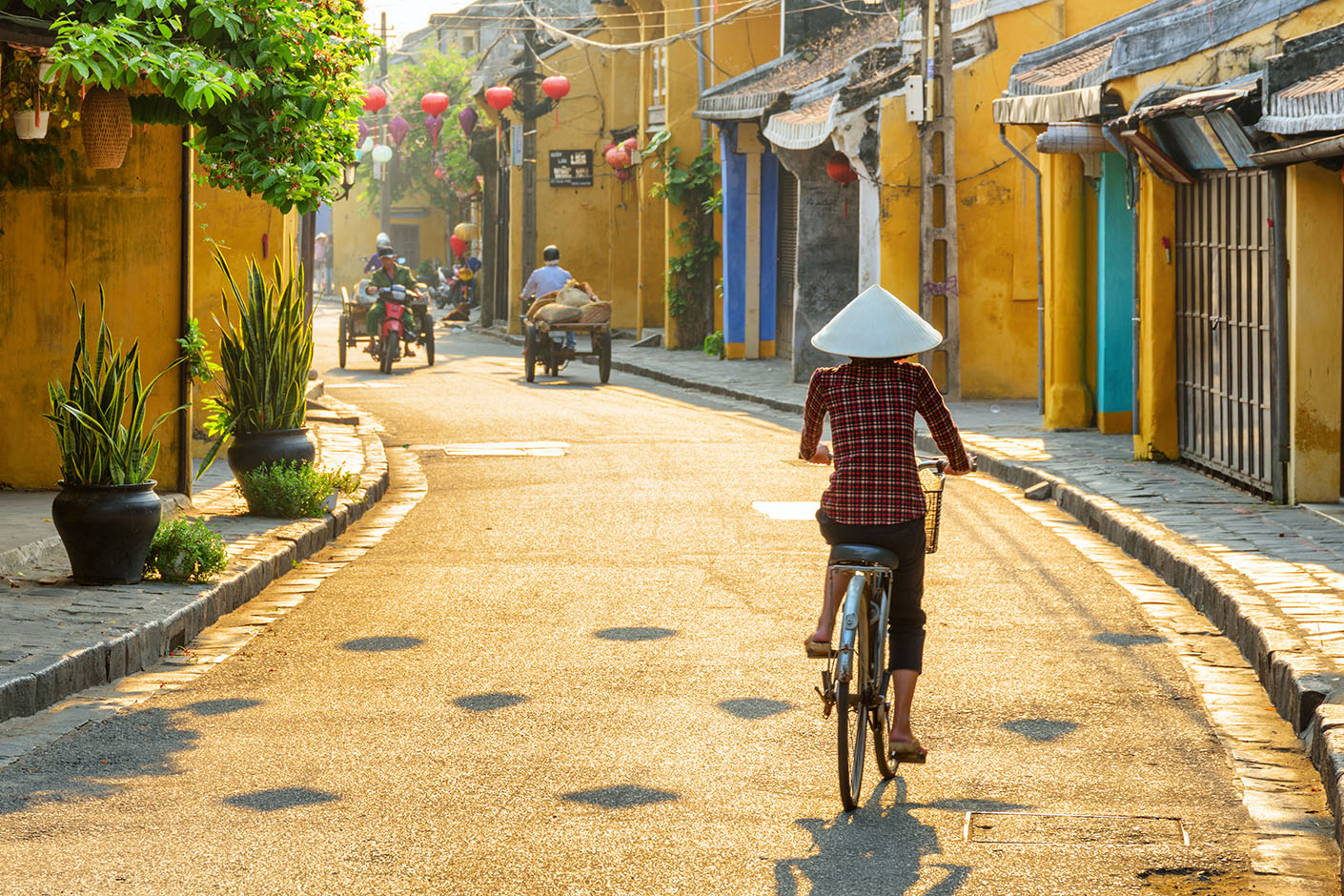
November 27, 2020 •
8 min reading
In October 2020, EHL hosted its annual Sustainability Week with a vast array of online seminars, activities and discussion panels. Considering the current impact on the hospitality industry of ongoing COVID-19, the theme of sustainable tourism is more than ever a relevant and urgent topic. Under the direction of Joshua Gan (EHL regional director Asia-Pacific), the issues concerning the socio-cultural aspect of sustainable tourism – its meaning and implementation - were thoughtfully turned over by the two guest speakers: Dr. Peter Varga (Assistant Prof in Sustainability) and Mark Edleson (CEO of Alila Hotels & Resorts).

The definition of Sustainability
According to the Environmental Protection Agency:
Sustainability creates and maintains the conditions under which humans and nature can exist in productive harmony that permit fulfilling the social, economic, and other requirements of present and future generations.
The analysis of sustainability is often divided into three main perspectives: social, economic and environmental, (also known as “people, profit and planet”). When talking about the social/people aspect, one could argue that an additional perspective needs to be taken into account - that of culture.
1. What is meant by “the socio-cultural aspect of sustainability”?
PV: The term refers to, among others, how the local community of a tourism destination is affected by the tourism industry. Hitherto, local cultural frameworks have often been neglected by the mass tourism industry. The perspectives of the tourism hosts should be taken into consideration in a more sustainable way, particularly in the developing world.
Much is normally erased for the sake of modern beach culture, bars, shopping malls, fast entertainment and consumerism. Little attention has been paid to erecting quality, authentic and culturally-rich experiences that benefit both host and visitors. As a result, the majority of todays’ tourism destinations are unsustainable due to various factors such as too fast development and lack of consideration of sustainable parameters, such as the environment and local communities. If tourism is to change and become more sustainable, the aspect of culture must be taken into account.
When we speak of culture in tourism it refers to both host and guest cultures. The goal is to create a harmonious sociocultural environment where long-term sustainable relationships are maintained among all the tourism stakeholders. This may seem excessively idealistic, nevertheless it is worth to try, at least to try and reflect on it in tourism development projects.
ME: Paying attention to the environment is now more pressing than ever. Despite the many labor and environmental regulations, few are actually adhered to. Tourism operators need to understand that sustainable tourism means more than just preserving the beautiful landscape of a tourist destination. It means, for example, respecting village mentality, places of worship, agricultural sites, all that is essential to the upkeep of local cultural identity. Operators have to ask themselves if what they are developing will be beneficial or harmful to the locals. Are they looking to promote mass tourism or quality tourism?
Mass tourism leads to land grabbing, wider roads, more transportation, traffic, pollution – many by-products that initially appear to be generating employment and returns, but that are damaging and simply not sustainable in the long run. The question today is: How to preserve the cultural fabric of a tourist destination?
2. Can you give examples of destinations that have remained socio-culturally intact?
ME: The Alila brand has based itself on a sustainable model from its inception and has tried to preserve as much of the original fabric of local life, culture and nature as possible. We use eco- designed constructions made out of local materials. We incorporate many sustainable initiatives, e.g. local water bottled in reusable glass jars, bamboo straws, organic gardens in the hotels’ compound, compost used from hotel waste, a ‘giving bag’ in each room where guests can leave anything they don’t want to take home, beach cleaning initiatives for staff and guests.

Image credits: Alila Hotels
We try to involve the locals in tourist activities where they are the beneficiaries and that naturally enhance the cultural vocabulary. A very successful initiative has been for local families to open up their homes to host dining experiences for visitors, thereby helping the village integrate the tourists and teach them about the local food and customs. This is precious, authentic interaction for the guests, as well as a means of showing respect to the villagers and developing ties with them. Reaching out respectfully to the community is an crucial step on the road to sustainable tourism.
PV: Some communities have kept their cultural rituals and turned them into interesting tourism features, which is an example of the revitalization of culture. For example, in South Africa, the Zulu dance has become a key tourist attraction, and subsequently, a commodity. Similarly, in other indigenous societies such as in the Amazon rainforest, the shamanistic presentations have become a commodity expected by tourists.
The positive outcome of this cultural ‘commodification’ is its economic benefits for the hosts and also the fact that locals keep the tradition alive. Other less appealing cultural elements for the guest will eventually be lost. Hence, the host culture is expected to adapt to tourism – but this is a fragile set up, because what if the tourism flow suddenly stops, as during this current COVID-19 pandemic? Local societies should not become too dependent on tourism, because it makes them economically fragile in front of unexpected global calamities.
A good example are the Guna people on the Caribbean side of Panama, who have intentionally made their precious small archipelagos an exclusive destination where leakage stays low, so economic benefits stay within their reach.
« The Guna are also one of the rare indigenous groups who seem to be striking a balance between their traditional ways of life and modern conventions. Since 1996, the business of tourism has rested solely in their hands, following a history of showdowns with investors who had seized lands and built luxury hotels and cabins without the blessing of the Guna General Congress. Today, the “Ley Fundamental Guna,” bans the sale or rent of Guna lands to outsiders, including Panamanians, as well as non-Guna investments in their territory. » - Mashable Media
Guana Yala Island (Image Credits: Go2Sanblas )
3. What’s the role of governments and stakeholders?
PV: Tourism has often been treated as a thriving industry by governments, especially in developing nations. However, as mentioned above, the local stakeholders are rarely taken into account, unlike the external ones (banks, developers, expatriate management, etc.) who tend to control everything. It can almost be seen as a form of neo-colonization, where the external stakeholders impose a specific type of development on the destination.
The economic return on mass tourism is considerable, but little attention is paid to the stress this causes to the local people and their culture. Some communities are very fragile in the face of mass tourism, it impacts their quality of life on a daily bases, both on tangible and intangible levels. Mass tourism may allow locals to buy mobile phones while they do not have indoor plumbing at home. Such odd ‘developments’ may generate a very unequal sociocultural environment in the destination. Even in developed countries, (take Venice for example), mass tourism had got so out of hand that the COVID lockdown was seen in many ways as a ‘blessing’ for the environment and many of the locals. There are some archeological sites, such as Angkor Wat in Cambodia to name just one among many, that risks destroying its own ‘raison d’être’ due to the uncontrolled over-tourism phenomenon.
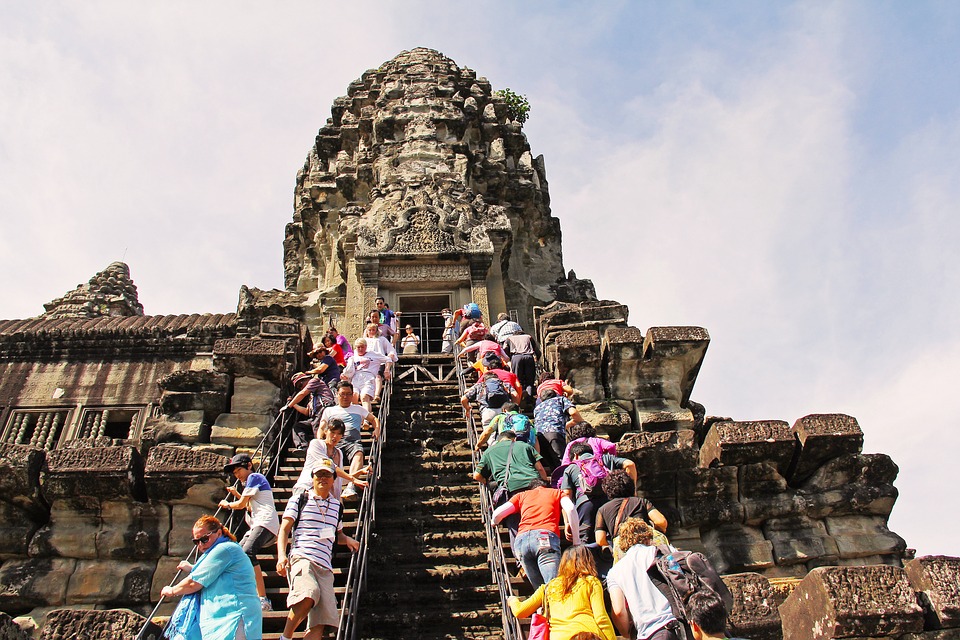
Overtourism problem at Angkor Wat (Image Credits: Good-Travel )
ME: Governments tend to go for numbers, especially in developing countries. They are influenced by a business model that runs on economic drive and targets to be reached. Tourism is seen as an ‘export’. Tourism Officers are elected and their job is to see visitor numbers increase, which in turn causes stress to the local culture. DMCc (Destination Management Companies) have a vested interest in big groups of tourists because they stand to make a profit from tourists visiting certain shops and restaurants. In mass tourism, there’s a big circle of players all looking for their cut.
In the Bali village where I live, local teens are now going to tourism school whereas before they were going to an agriculture college. This was originally an agrarian society based on a farming economy. Land is now being sold to tourism not to farming. Tourism on this island means that some ties have been strengthened, others weakened. In order to strike a more balanced outcome, tourism must be more controlled in the future, even if that means making it more expensive.
4. How can tourists and governments change their mindset?
PV: Tourists need to start thinking about why they are traveling. There is something deeply wrong with the “why not?” mentality fueled by cheap air fares resulting in a few, fast days spent here and there. Travel has to become more purposeful. The idea of slow travel where the objective is to explore and immerse oneself in a new culture over a few weeks should be promoted. Travelers must change their expectations and mindset: show more care about their destination, do better research on simple local cultural specificities such as tipping, dress code, being respectful of the local culture, how to chat with locals, etc. We should do our best to avoid slipping back to pre-COVID times, and reflect on how to make tourism more sustainable.
ME: Ironically, COVID-19 has caused some necessary slowing down, with a refreshing new focus on domestic tourism. On one hand, the pandemic has helped de-emphasize material things, but on the other it has accelerated the craving for experiences. Hence, I am fearful that there will be a return to mass tourism once these restrictive times are over. Much will depend on whether the low-cost carriers are still in business or not. But essentially, it’s up to us, the travelers, to carry out more research into our destination and travel with a greater sense of purpose.
PV: As a brief conclusion of this panel, the future of tourism depends on how much attention we pay to sustainable aspects. The current pandemic has not only revealed a fragile tourism industry, but it’s also shown how stakeholders and destinations are suffering from a situation that, as yet, has no definitive end point. A more sustainable planning mindset, in all aspects of the tourism and travel sector, would enable us to prepare for an uncertain, but hopefully more responsible future.
"Contributing beyond education encourages the EHL community to give back to society by driving sustainable change wherever they live and work, both during and after their education. This is a strong call to action that should empower each of us to do more and play our part in making the world a fair, ethical and sustainable place". - Michel Rochat (CEO, EHL Group)

EHL Insights content editor

Assistant Professor at EHL
Keep reading

Creating a luxury hospitality brand in a competitive market
Sep 24, 2024

What is a Front Desk Associate

Hotel branding strategy: Building an authentic identity in hospitality
Sep 20, 2024
This is a title
This is a text
- Bachelor Degree in Hospitality
- Pre-University Courses
- Master’s Degrees & MBA Programs
- Executive Education
- Online Courses
- Swiss Professional Diplomas
- Culinary Certificates & Courses
- Bachelor Admissions Requirements
- Bachelor Admissions Procedures
- EHL Campus Lausanne
- EHL Campus (Singapore)
- EHL Campus Passugg
- Host an Event at EHL
- Contact our program advisors
- Join our Open Days
- Meet EHL Representatives Worldwide
- Chat with our students
- Why Study Hospitality?
- Careers in Hospitality
- Awards & Rankings
- EHL Network of Excellence
- Scholarships & Financial Aid
- EHL Hospitality Business School
- Route de Berne 301 1000 Lausanne 25 Switzerland
- Accreditations & Memberships
- Privacy Policy
- Legal Terms
© 2024 EHL Holding SA, Switzerland. All rights reserved.
UN Tourism | Bringing the world closer
Ethics, culture and social responsibility.
- Global Code of Ethics for Tourism
- Accessible Tourism
Tourism and Culture
- Women’s Empowerment and Tourism
share this content
- Share this article on facebook
- Share this article on twitter
- Share this article on linkedin
The convergence between tourism and culture, and the increasing interest of visitors in cultural experiences, bring unique opportunities but also complex challenges for the tourism sector.
“Tourism policies and activities should be conducted with respect for the artistic, archaeological and cultural heritage, which they should protect and pass on to future generations; particular care should be devoted to preserving monuments, worship sites, archaeological and historic sites as well as upgrading museums which must be widely open and accessible to tourism visits”
UN Tourism Framework Convention on Tourism Ethics
Article 7, paragraph 2
This webpage provides UN Tourism resources aimed at strengthening the dialogue between tourism and culture and an informed decision-making in the sphere of cultural tourism. It also promotes the exchange of good practices showcasing inclusive management systems and innovative cultural tourism experiences .
About Cultural Tourism
According to the definition adopted by the UN Tourism General Assembly, at its 22nd session (2017), Cultural Tourism implies “A type of tourism activity in which the visitor’s essential motivation is to learn, discover, experience and consume the tangible and intangible cultural attractions/products in a tourism destination. These attractions/products relate to a set of distinctive material, intellectual, spiritual and emotional features of a society that encompasses arts and architecture, historical and cultural heritage, culinary heritage, literature, music, creative industries and the living cultures with their lifestyles, value systems, beliefs and traditions”. UN Tourism provides support to its members in strengthening cultural tourism policy frameworks, strategies and product development . It also provides guidelines for the tourism sector in adopting policies and governance models that benefit all stakeholders, while promoting and preserving cultural elements.
Recommendations for Cultural Tourism Key Players on Accessibility
UN Tourism , Fundación ONCE and UNE issued in September 2023, a set of guidelines targeting key players of the cultural tourism ecosystem, who wish to make their offerings more accessible.
The key partners in the drafting and expert review process were the ICOMOS International Cultural Tourism Committee and the European Network for Accessible Tourism (ENAT) . The ICOMOS experts’ input was key in covering crucial action areas where accessibility needs to be put in the spotlight, in order to make cultural experiences more inclusive for all people.
This guidance tool is also framed within the promotion of the ISO Standard ISO 21902 , in whose development UN Tourism had one of the leading roles.
Download here the English and Spanish version of the Recommendations.
Compendium of Good Practices in Indigenous Tourism

The report is primarily meant to showcase good practices championed by indigenous leaders and associations from the Region. However, it also includes a conceptual introduction to different aspects of planning, management and promotion of a responsible and sustainable indigenous tourism development.
The compendium also sets forward a series of recommendations targeting public administrations, as well as a list of tips promoting a responsible conduct of tourists who decide to visit indigenous communities.
For downloads, please visit the UN Tourism E-library page: Download in English - Download in Spanish .
Weaving the Recovery - Indigenous Women in Tourism

This initiative, which gathers UN Tourism , t he World Indigenous Tourism Alliance (WINTA) , Centro de las Artes Indígenas (CAI) and the NGO IMPACTO , was selected as one of the ten most promising projects amoung 850+ initiatives to address the most pressing global challenges. The project will test different methodologies in pilot communities, starting with Mexico , to enable indigenous women access markets and demonstrate their leadership in the post-COVID recovery.
This empowerment model , based on promoting a responsible tourism development, cultural transmission and fair-trade principles, will represent a novel community approach with a high global replication potential.
Visit the Weaving the Recovery - Indigenous Women in Tourism project webpage.
Inclusive Recovery of Cultural Tourism

The release of the guidelines comes within the context of the International Year of Creative Economy for Sustainable Development 2021 , a UN initiative designed to recognize how culture and creativity, including cultural tourism, can contribute to advancing the SDGs.
UN Tourism Inclusive Recovery Guide, Issue 4: Indigenous Communities

Sustainable Development of Indigenous Tourism
The Recommendations on Sustainable Development of Indigenous Tourism provide guidance to tourism stakeholders to develop their operations in a responsible and sustainable manner within those indigenous communities that wish to:
- Open up to tourism development, or
- Improve the management of the existing tourism experiences within their communities.
They were prepared by the UN Tourism Ethics, Culture and Social Responsibility Department in close consultation with indigenous tourism associations, indigenous entrepreneurs and advocates. The Recommendations were endorsed by the World Committee on Tourism Ethics and finally adopted by the UN Tourism General Assembly in 2019, as a landmark document of the Organization in this sphere.
Who are these Recommendations targeting?
- Tour operators and travel agencies
- Tour guides
- Indigenous communities
- Other stakeholders such as governments, policy makers and destinations
The Recommendations address some of the key questions regarding indigenous tourism:

Download PDF:
- Recommendations on Sustainable Development of Indigenous Tourism
- Recomendaciones sobre el desarrollo sostenible del turismo indígena, ESP
UN Tourism/UNESCO World Conferences on Tourism and Culture
The UN Tourism/UNESCO World Conferences on Tourism and Culture bring together Ministers of Tourism and Ministers of Culture with the objective to identify key opportunities and challenges for a stronger cooperation between these highly interlinked fields. Gathering tourism and culture stakeholders from all world regions the conferences which have been hosted by Cambodia, Oman, Türkiye and Japan have addressed a wide range of topics, including governance models, the promotion, protection and safeguarding of culture, innovation, the role of creative industries and urban regeneration as a vehicle for sustainable development in destinations worldwide.
Fourth UN Tourism/UNESCO World Conference on Tourism and Culture: Investing in future generations. Kyoto, Japan. 12-13 December 2019 Kyoto Declaration on Tourism and Culture: Investing in future generations ( English, French, Spanish, Arabic, Russian and Japanese )
Third UN Tourism/UNESCO World Conference on Tourism and Culture : For the Benefit of All. Istanbul, Türkiye. 3 -5 December 2018 Istanbul Declaration on Tourism and Culture: For the Benefit of All ( English , French , Spanish , Arabic , Russian )
Second UN Tourism/UNESCO World Conference’s on Tourism and Culture: Fostering Sustainable Development. Muscat, Sultanate of Oman. 11-12 December 2017 Muscat Declaration on Tourism and Culture: Fostering Sustainable Development ( English , French , Spanish , Arabic , Russian )
First UN Tourism/UNESCO World Conference’s on Tourism and Culture: Building a new partnership. Siem Reap, Cambodia. 4-6 February 2015 Siem Reap Declaration on Tourism and Culture – Building a New Partnership Model ( English )
UN Tourism Study on Tourism and Intangible Cultural Heritage
The first UN Tourism Study on Tourism and Intangible Cultural Heritage provides comprehensive baseline research on the interlinkages between tourism and the expressions and skills that make up humanity’s intangible cultural heritage (ICH).

Through a compendium of case studies drawn from across five continents, the report offers in-depth information on, and analysis of, government-led actions, public-private partnerships and community initiatives.
These practical examples feature tourism development projects related to six pivotal areas of ICH: handicrafts and the visual arts; gastronomy; social practices, rituals and festive events; music and the performing arts; oral traditions and expressions; and, knowledge and practices concerning nature and the universe.
Highlighting innovative forms of policy-making, the UN Tourism Study on Tourism and Intangible Cultural Heritage recommends specific actions for stakeholders to foster the sustainable and responsible development of tourism by incorporating and safeguarding intangible cultural assets.
UN Tourism Study on Tourism and Intangible Cultural Heritage
- UN Tourism Study
- Summary of the Study
Studies and research on tourism and culture commissioned by UN Tourism
- Tourism and Culture Synergies, 2018
- UN Tourism Study on Tourism and Intangible Cultural Heritage, 2012
- Big Data in Cultural Tourism – Building Sustainability and Enhancing Competitiveness (e-unwto.org)
Outcomes from the UN Tourism Affiliate Members World Expert Meeting on Cultural Tourism, Madrid, Spain, 1–2 December 2022
UN Tourism and the Region of Madrid – through the Regional Ministry of Culture, Tourism, and Sports – held the World Expert Meeting on Cultural Tourism in Madrid on 1 and 2 December 2022. The initiative reflects the alliance and common commitment of the two partners to further explore the bond between tourism and culture. This publication is the result of the collaboration and discussion between the experts at the meeting, and subsequent contributions.
Relevant Links
- 3RD UN Tourism/UNESCO WORLD CONFERENCE ON TOURISM AND CULTURE ‘FOR THE BENEFIT OF ALL’
Photo credit of the Summary's cover page: www.banglanatak.com

Social and cultural impacts
When we travel we consume places and local cultures. That can happen with more or less interaction with the local population. Maybe you only get to meet the hotel and restaurant staff? The influx of temporary visitors with other goals and means than the local population (see Behaviour on holiday) affects the local community and its inhabitants’ quality of life and culture, in the short and long term. Where tourism has grown exponentially many different positive and negative impacts have been noted, and the greater the dependence on tourism the community has, the more inclined locals and the local tourist industry are to change local traditions and lifestyles to adapt to tourists’ needs.
Local populations’ reactions to increased tourism occur in different ways. They have different strategies to adapt their day to day life around tourists. Some embrace development wholeheartedly. These are often locals with a connection to the tourism industry. Others create barriers, in other words they keep their distance from tourists and rarely interact. Locals might avoid touristy squares and streets. Other distancing strategies are withdrawal involving removing themselves completely from the area during the tourist season. Maybe you have another place to move to for the time being. An extreme strategy, appearing recently in Barcelona and Venice, for instance, is opposition. In this case tourism has affected their life quality very negatively, and the volume of tourism is so extreme that the local population demonstrate or act violently against tourism actors.
In a review of earlier research, Australian researchers listed the potential positive and negative impacts from a social perspective. In the table below is a selection of the most prominent:

It’s important to take into account potential social and cultural impacts when planning for tourism. Often the focus is on tourism as a tool for socio-economic development (money and jobs), but a majority of local residents more often come into direct contact with the impacts listed in the table above. The impacts are more obvious in less rural communities and in destinations where the distances (cultural, economic, powerful, etc.) between tourists and local residents are greater.
Ap, J., & Crompton, J. L. (1993). Residents' Strategies for Responding to Tourism Impacts. Journal of Travel Research, 32(1), 47-50. Deery, M., Jago, L., & Fredline, L. (2012). Rethinking social impacts of tourism research: A new research agenda. Tourism Management, 33(1), 64-73 Hunt, E. (2017, August 4). ‘Tourism kills neighbourhoods’: how do we save cities from the city break? The Guardian. www.theguardian.com. Lundberg, E. (2014). Tourism Impacts and Sustainable Development. Gothenburg: University of Gothenburg.

- Methodology

Maintained in cooperation with Travel CO 2
Culture, Tourism and Sustainability (Cultural Heritage and Sustainable Tourism, Social Sustainability of Tourism, Socio-Cultural Sustainability of Tourism)
- Living reference work entry
- First Online: 01 March 2020
- Cite this living reference work entry

- Nil Sonuç 7
307 Accesses
2 Citations
Definition and Conceptual Framework
The relationship of culture, tourism, and sustainability in other words, social or socio-cultural sustainability of tourism including sustainable cultural heritage management for tourism is basically constructed upon the vulnerable and sensitive issues related to people: their values, their history, identity and living styles, their behaviors, attitudes, perceptions; their acceptance or rejection levels; and their emotions towards tourism.
The socio-culturally sustainable tourism system is comprised of all these “people” issues given priority while ensuring the “well-being” and “quality of life” of all stakeholders being involved to some extent, in the exchange of tourism products and services. In this system, the benefits provided by tourism and the costs incurred by the stakeholders concerned are to be conducted at tolerance limits for inhabitants (or beneficiaries) who are involved in decision-making and serving and users (or tourists).
The given...
This is a preview of subscription content, log in via an institution to check access.
Access this chapter
Institutional subscriptions
Briassoulis, H. (2002). Sustainable tourism and the question of the commons. Annals of Tourism Research, 29 (4), 1065–1085.
Article Google Scholar
Carneiro, M. J., Eusébio, C., Kastenholz, E., & Alvelos, H. (2013). Motivations to participate in social tourism programmes: A segmentation analysis of the senior market. Anatolia, 24 (3), 352–366. https://doi.org/10.1080/13032917.2013.767212 .
Chok, S., Macbeth, J., & Warren, C. (2007). Tourism as a tool for poverty alleviation: A critical analysis of ‘pro-poor tourism’ and implications for sustainability. Current Issues in Tourism, 10 (2–3), 144–165. https://doi.org/10.2167/cit303 .
Cotterell, D., Hales, R., Arcodia, C., & Ferreira, J.-A. (2019). Overcommitted to tourism and under committed to sustainability: The urgency of teaching “strong sustainability” in tourism courses. Journal of Sustainable Tourism, 27 (7), 882–902. https://doi.org/10.1080/09669582.2018.1545777 .
De Ascaniis, S., Gravari-Barbas, M., & Cantoni, L. (2018). Tourism management at UNESCO World heritage sites . ISBN 978-88-6101-018-5. Lugano: Università della Svizzera italiana.
Google Scholar
Ekinci, M. B. (2014). The Cittaslow philosophy in the context of sustainable tourism development; the case of Turkey. Tourism Management, 41 , 178–189.
George, E. W. (2010). Intangible cultural heritage, ownership, copyrights, and tourism. International Journal of Culture, Tourism and Hospitality Research, 4 (4), 376–388.
Giudici, E., Melis, C., Dessì, S., & Pollnow Galvao Ramos, B. F. (2013). Is intangible cultural heritage able to promote sustainability in tourism? International Journal of Quality and Service Sciences, 5 (1), 101–114. https://doi.org/10.1108/17566691311316275 .
Hughes, G. (1995). The cultural construction of sustainable tourism. Tourism Management, 16 (1), 49–59.
Imon, S. S. (2017). Cultural heritage management under tourism pressure. Worldwide Hospitality and Tourism Themes, 9 (3), 335–348. https://doi.org/10.1108/WHATT-02-2017-0007 .
ISTO (International Social Tourism Organization). Activity report 2016–2017. http://www.oits-isto.org/oits/files/resources/1095.pdf . Accessed 12 July 2019.
ISTO (International Social Tourism Organization). Internet site. http://www.oits-isto.org/oits/public/section.jsf?id=29 . Accessed 12 July 2019.
Landorf, C. (2009). Managing for sustainable tourism: A review of six cultural world heritage sites. Journal of Sustainable Tourism, 17 (1), 53–70. https://doi.org/10.1080/09669580802159719 .
Lee, T. H. (2013). Influence analysis of community resident support for sustainable tourism development. Tourism Management, 34 , 37–46.
Liang, Z., & Hui, T. (2016). Residents’ quality of life and attitudes toward tourism development in China. Tourism Management, 57 , 56–67.
Lin, Z., Chen, Y., & Filieri, R. (2017). Resident-tourist value co-creation: The role of residents’ perceived tourism impacts and life satisfaction. Tourism Management, 61 , 436–442.
Luke, C. (2013). Cultural sovereignty in the Balkans and Turkey: The politics of preservation and rehabilitation. Journal of Social Archaeology, 13 (3), 350–370. https://doi.org/10.1177/1469605313487622 .
McCabe, S. (2009). Who needs a holiday? Evaluating social tourism. Annals of Tourism Research, 36 (4), 667–688.
McCabe, S., & Diekmann, A. (2015). The rights to tourism: Reflections on social tourism and human rights. Tourism Recreation Research, 40 (2), 194–204.
Minnaert, L., Maitland, R., & Miller, G. (2009). Social tourism as a potential mesure to reduce social exclusion. Annals of Tourism Research, 36 (2), 316–334.
Minnaert, L., Stacey, J., Quinn, B., & Griffin, K. (2010). Social tourism for low-income groups: Benefits in UK and Irish context. In Tourism and inequality (pp. 126–143). Wallingford: CABI.
Nasser, N. (2003). Planning for urban heritage places: Reconciling conservation, tourism, and sustainable development. Journal of Planning Literature, 17 , 4. https://doi.org/10.1177/0885412203251149.
Neto, F. (2003). A new approach to sustainable tourism development: Moving beyond environmental protection. Natural Resources Forum, 27 , 212–222.
Poria, Y., Reichel, A., & Cohen, R. (2013). Tourists perceptions of world heritage site and its designation. Tourism Management, 35 , 272–274.
Rasoolimanesh, M., Ringle, C. M., Jaafar, M., & Ramayah, T. (2017). Urban vs. rural destinations: Residents’ perceptions, community participation and support for tourism development. Tourism Management, 60 , 147–158.
Richards, G. (2018). Cultural tourism: A review of recent research and trends. Journal of Hospitality and Tourism Management, 36 , 12–21.
Santa-Cruz, F. G., & López-Guzmán, T. (2017). Culture, tourism and world heritage sites. Tourism Management Perspectives, 24 , 111–116.
SDGityourself. (2017). ISTO internet site. http://www.oits-isto.org/oits/files/resources/1097.pdf . Accessed 12 July 2019.
Sims, R. (2009). Food, place and authenticity: Local food and the sustainable tourism experience. Journal of Sustainable Tourism, 17 (3), 321–336.
Stylianou-Lambert, T. (2011). Gazing from home: Cultural tourism and art museums. Annals of Tourism Research, 38 (2), 403–421.
Stylidis, D., Biran, A., Sit, J., & Szivas, E. M. (2014). Residents’ support for tourism development: The role of residents’ place image and perceived tourism impacts. Tourism Management, 45 , 260–274.
Tourism for SDGs, A Platform Developed by UNWTO. Tourism and sustainable development goals. http://tourism4sdgs.org/tourism-for-sdgs/ . Accessed 24 July 2019.
Urry, J. (2008). The tourist gaze . Los Angeles/London/New Delhi/Singapore: SAGE.
Uysal, M., Woo, E., & Singal, M. (2012). The tourist area life cycle (TALC) and its effect on the quality-of-life (QOL) of destination community. In M. Uysal et al. (Eds.), Handbook of tourism and quality-of-life research: Enhancing the lives of tourists and residents of host communities. International handbooks of quality-of-life (pp. 423–443). Dordrecht, Heidelberg, London, New York: Springer Science+Business Media B.V. https://doi.org/10.1007/978-94-007-2288-0_25 .
Van der Borg, J., Costa, P., & Gotti, G. (1996). Tourism in European cities. Annals of Tourism Research, 23 (2), 306–321.
Download references
Author information
Authors and affiliations.
İzmir Katip Çelebi University, İzmir, Turkey
You can also search for this author in PubMed Google Scholar
Corresponding author
Correspondence to Nil Sonuç .
Editor information
Editors and affiliations.
London Metropolitan University, Guildhall Faculty of Business and Law London Metropolitan University, London, UK
Samuel Idowu
Cologne Business School, Ingolstadt, Germany
René Schmidpeter
College of Business, Loyola University New Orleans, New Orleans, LA, USA
Nicholas Capaldi
International Training Centre of the IL, International Labor Organization, Turin, Italy
Liangrong Zu
Department of Economics, Society and Politics, University of Urbino Carlo Bo, Urbino, Italy
Mara Del Baldo
Instituto Politécnico da Guarda, Guarda, Portugal
Section Editor information
Faculty of Social Sciences and Business Studies, University of Eastern Finland, Kuopio, Finland
Arto O. Salonen
Rights and permissions
Reprints and permissions
Copyright information
© 2020 Springer Nature Switzerland AG
About this entry
Cite this entry.
Sonuç, N. (2020). Culture, Tourism and Sustainability (Cultural Heritage and Sustainable Tourism, Social Sustainability of Tourism, Socio-Cultural Sustainability of Tourism). In: Idowu, S., Schmidpeter, R., Capaldi, N., Zu, L., Del Baldo, M., Abreu, R. (eds) Encyclopedia of Sustainable Management. Springer, Cham. https://doi.org/10.1007/978-3-030-02006-4_457-1
Download citation
DOI : https://doi.org/10.1007/978-3-030-02006-4_457-1
Received : 03 November 2019
Accepted : 04 December 2019
Published : 01 March 2020
Publisher Name : Springer, Cham
Print ISBN : 978-3-030-02006-4
Online ISBN : 978-3-030-02006-4
eBook Packages : Springer Reference Business and Management Reference Module Humanities and Social Sciences Reference Module Business, Economics and Social Sciences
- Publish with us
Policies and ethics
- Find a journal
- Track your research
Academia.edu no longer supports Internet Explorer.
To browse Academia.edu and the wider internet faster and more securely, please take a few seconds to upgrade your browser .
Enter the email address you signed up with and we'll email you a reset link.
- We're Hiring!
- Help Center

SOCIO-CULTURAL IMPACTS OF TOURISM SOCIO-CULTURAL IMPACTS OF TOURISM

Related Papers
Amanda Mohlomi
Pilar Smyth
The purpose of this Master's thesis is to uncover the negative physical and social effects of tourism on heritage sites around the world and on various ethnic groups and/or Indigenous Peoples. The specific aims of this thesis are: To discover incidents of vandalism at heritage sites from around the world in the forms of looting and graffiti that were either directly or indirectly caused by the tourism industry. To discover and demonstrate the negative physical effects that arise from looting and graffiti. To discover various examples of erosion at heritage sites from around the world that were either directly or indirectly caused by the tourism industry. To demonstrate the negative physical effects of these examples of erosion on our global heritage. To discover case studies of where the culturally and socially perceived sense of sanctity of various heritage sites was either directly or indirectly effected by the tourism industry. To discover the implications of how these effects may have impacted various ethnic groups and/or Indigenous Peoples associated with these heritage sites. To discover the negative social effects of the commodification of various ethnic groups and/or Indigenous Peoples cultural heritage that was either directly or indirectly brought on by the tourism industry. To find and discuss at least one case study in which a specific ethnic and/or Indigenous Peoples group was (or still is) negatively impacted by cultural commodification that was either directly or indirectly brought on by the tourism industry. The research for this thesis led to the discovery that heritage sites have suffered often irreparable damage (either directly or indirectly) by the tourism industry in the forms of vandalism (looting and graffiti) and erosion via tourist’s movement, general behaviour, generated humidity and construction. It was also discovered that the tourism industry has caused various negative social impacts on the perceived sanctity of various heritage sites and to the Indigenous Peoples living among them in the forms of ‘Naked Tourism’ and overcrowding. Lastly, an exploration into the social impact of the commodification of Indigenous Peoples by the tourism industry led to the realisation that this can and has led to the exploitation of many of these peoples and the change in the significance of many of their cultural materials.
Asia Pacific Journal of Tourism Research
Tourism Review
greg richards
Purpose To review the development of the relationship between culture and tourism over the past 75 years, and to outline some future developments over the coming 75 years. Design/methodology/approach A review of previous major work on cultural tourism. Findings Tourism and culture have been drawn inexorably closer over the years as culture has become one of the major content providers for tourism experiences, and tourism has become one of the most important income streams for cultural institutions. In the future this is likely to change, as cultural institutions find it increasingly difficult to maintain their authority as the dominant producers of local, regional and national culture, and as tourism becomes increasingly integrated into the everyday culture of the destination. Practical implications Cultural institutions will need to change their relationship with tourism as flows of tourists become more prevalent and fragmented. Social Implications The authority of high cultural institutions will be eroded as tourists increasingly seek authenticity in the culture of everyday life and the 'local'. Originality/value A first attempt to sketch the long term future of cultural tourism.
Can-Seng Ooi
Sune Rasmussen
Ksenija Vodeb
In modern tourism the concept of big and mass tourism has been abandoned and support given to responsible development based on selected programmes and types of tourism, which leads to a new differentiation and quality in the increasingly demanding tourist market. The existing mass and uniform types of tourism are being refined by new and higher quality contents. In that context, culture has a direct impact on tourism and tourism increasingly affects culture, which has become an important motive for tourist travel. While some thirty years ago cultural tourism implied heritage tourism, i.e. visits to cultural and historical monuments, museums and galleries, some ten years ago that phenomenon underwent its transformation, so that today the same term also includes various social, cultural and entertainment events. The aim of this chapter is to provide a broader introduction into the highly diverse and complex topic of cultural tourism and highlight some of its most distinguished feature...
"Cultural tourism is one of the largest and fastest-growing global tourism markets. Culture and creative industries are increasingly being used to promote destinations and enhance their competitiveness and attractiveness. Many locations are now actively developing their tangible and intangible cultural assets as a means of developing comparative advantages in an increasingly competitive tourism marketplace, and to create local distinctiveness in the face of globalisation. The Impact of Culture on Tourism examines the growing relationship between tourism and culture, and the way in which they have together become major drivers of destination attractiveness and competitiveness. Based on recent case studies that illustrate the different facets of the relationship between tourism, culture and regional attractiveness, and the policy interventions which can be taken to enhance the relationship, this publication shows how a strong link between tourism and culture can be fostered to help places become more attractive to tourists, as well as increasing their competitiveness as locations to live, visit, work and invest in. The book is essential reading for academics, national and local policy makers and practitioners and all those in the tourism sector who wish to understand the relationship between culture, tourism and destination attractiveness."
RELATED PAPERS
Dalibor Janiš
Luiz Carlos MB
Francesco Santoianni
Matthieu Poux
Nicolas Cavallera
Joseph Lumbard
Anang Mardani
Hatem Bazian
Sakis Totlis
Technology and Culture
Courtney Fullilove
Daniyal Azhar
ALTitude, 10(1), 8
Michael Lessard-Clouston
Δήμητρα/Demetra Τζανάκη/Tzanaki
Trang Thu Hà
Nytt i suicidologi
Henning Herrestad
Márton Bársony
Cristhian David Torres
Applied optics
mahdieh hashemi
The Annals of thoracic surgery
Carley Demchuk
Proceedings of the 50th Hawaii International Conference on System Sciences (2017)
Judy Mullan
Archives of Agronomy and Soil Science
Arti Bhatia
Love Marriage Problem Solution Astrologer Kuwait call 7568903785
molviramzan khan
António Bob Santos
Society for Industrial and Applied Mathematics eBooks
Elke Rundensteiner
Egyptian Journal of Chemistry
Arwa Mohammed Othman
- We're Hiring!
- Help Center
- Find new research papers in:
- Health Sciences
- Earth Sciences
- Cognitive Science
- Mathematics
- Computer Science
- Academia ©2024

Social and Cultural Impact of Tourism
Social and Cultural Impact of Tourism: Tourism industry in the 21 st century is witnessing unprecedented growth and it catalyses social progress and cultural revival while acting as an engine for income and employment generation.
Tourism is bringing great benefits to destinations world over and has become an instrument for poverty alleviation and sustainable development. Propoor tourism, volunteerism, indigenous tourism and several other neo-age forms have indeed revolutionized the socio-cultural undercurrents pertaining to the all-round development of tourism destinations. Impact of Tourism
Know more about Tourism Status Worldwide
Let us consider how tourism paves way for social harmony and cultural revitalization.
Basically there are four types of impact of tourism .
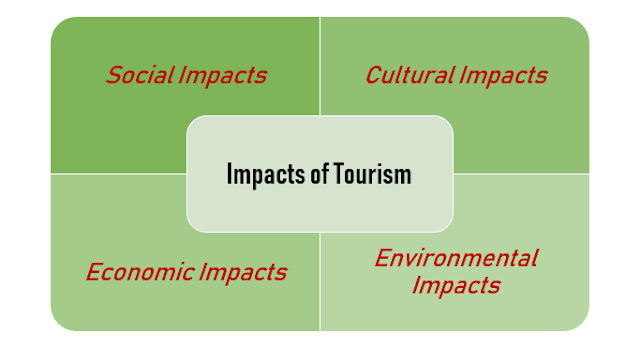
Social Impact of Tourism.
The power of tourism in breathing new life into dying cultural expression has been widely recognized. Moreover, tourism has the capacity to nourish the social values and other dimensions through greater appreciation and sharing.
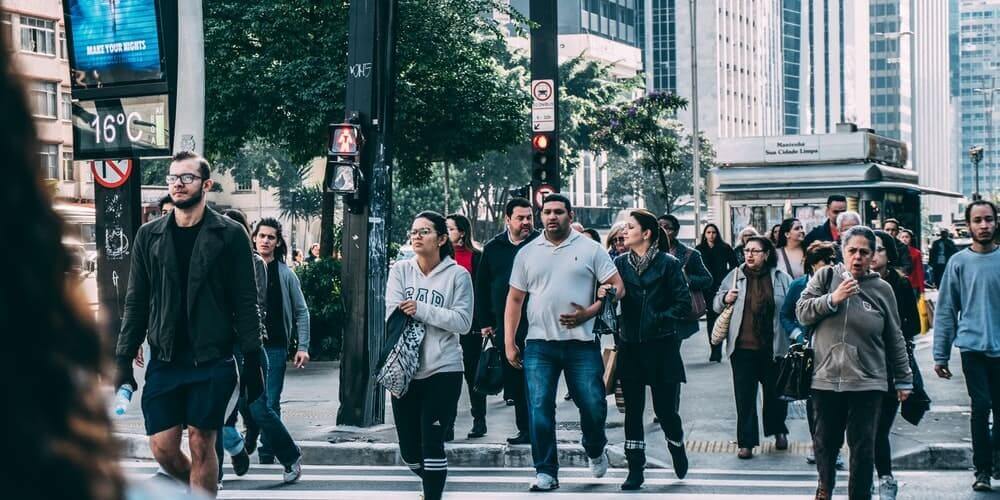
i) Positive Impacts.
A. all inclusive characteristics. .
Tourism is no more the privilege of a chosen few who prefers just the luxurious components of the industry. The tourist market globally configures very diverse segments encompassing geographical background, demographics categories, and the like.
It is not only the exclusive women group travelers who have become globetrotters and ventures to visit the exotic havens of the world; solo woman travelers are also going places in the current era.
Social tourism is yet another form of tourism that brings people with limited means to the mainstream pradding them to visit and enjoy tourism destinations. M. Hunziker at the Second Congress of Social Tourism held at Vienna and Salzburg in 1959 proposed the following definition:
“Social tourism is a type of tourism practiced by low income groups, and which is rendered possible and facilitated by entirely separate and therefore easily recognizable services. This form of tourism helps people with limited budget travel with assistance from NGO’s incentives and schemes under budget travel extended by the public system of tourism, and discounts offered by the private sector agencies.
Also read about Transportation in India
b. Social Stability and Peace.
Tourism provides sufficient impetus for people-to-people interaction, which is part and parcel of the Track-II Diplomacy. This diplomacy constitutes cultural relations not at the government level, but at the level of the common citizens of countries.
Tourism fosters social stability by instilling noble ideas and free thoughts thorough healthy interactions and various other transactions between the hosts and the guests wherein both are benefited. It broadens the mind of people and as a result, there is increased acceptance, mutual trust, and more tolerance. These factors contribute profusely towards strengthening social stability and world peace.
You may interested to read about Indian Railway
c. Appreciation of Social Norms, Values, and Practices
Sociologists categorically printout that as tourists visit several nations and regions and get back to their respective countries their vibes in appreciating own countries and regions become very profound.
It is indicated that tourists tend to see their countries in a newer light and value tremendously the intricate aspects of their social customs and practices. Another dimension here is that when tourists see better practices in the areas they visit, there is dire enthusiasm built up in them to introduce implement it in their own places.
d. The Educative Value and Social Upliftment.
Tourism is in a way education without classrooms. The interpersonal learning developed during interactions between the tourists and the host community is certainly an enriching experience for both the parties.
The new vision acquired as a result of different engagements with tourism – as tourist, local community, employer or employee will definitely have positive reflections on the society as well. There will be more refinement in the social processes and lifestyle practices.
Outdated and irrational traditionally acquired tendencies are replaced with progressive ideals and activities. Also, the real sense of modernity is captured and nurtured through tourism which is deemed to have made the world a ‘global village’. When the niceties are imbibed by societies and hazardous practices are disowned and discarded, it will culminate in social upliftment.
e. Contribution to Social Capital.
Tourism ushers social progress in manifold ways. In addition to the advancements made in the sphere of infrastructure and superstructure, destinations experience immense growth as regards educational institutions, health centers, pollution control systems, intensive security, cultural institutions, etc.
Social welfare measures receive excellent impetus as a result of tourism making a mark in the destination. Enhanced livelihood sustenance programmes have gained grounds in many a tourist centre as an offshoot of such measures. Artisans are trained to improve the quality of their works. Impact of Tourism
Social enterprises including rehabilitation centres, de-addiction centres, product innovation & development institutions, and local empowerment agencies are having a productive time due to the regular influx of tourists and the genuine interest taken by voluntary tourists and other stakeholders. The local handicrafts and emporiums get ample thrust with respect to the marketing support from tourism promoters both in the private and public sectors.
ii) Negative Impacts .
A. degeneration of tourism centres. .
Tourism is an avenue misused and exploited by antisocial elements. Tourists are unfortunately being targeted by those elements and they become easy victims of crime. It is the responsibility of the local communities to properly guide the tourists in such a way so as to avoid dangerous places and areas.
Owing to the prostitution, child abuse, drug trafficking, robbery and sexual assault on tourists, the image of many destinations have been eroded. The brand takes a beating when there is degeneration of destinations because of the crimes committed there.
b. Resentment and Hospitality of the Host Population.
Resentment of tourists by the host population as described by Doxey’s Irridex (Irritation Index) is found in some destinations. There are several reasons attributed to the host quest conflicts. One main reason is the sharing of local facilities and resources.
When tourists start using the same resources which the host population feels that are meant for them the spurt in conflict arise. This gets even more serious in the case of resources’ crunch. The local communities attribute the problem to the tourists.
c. Demonstration Effect.
This is a very serious effect as the consequences could be far-reaching. When certain members of the host community get enchanted by the lifestyle of the tourists and start aping/ imitating them at the cost of their own social mores and cultural dispositions, the local culture and values suffer.
There is some kind of erosion of values as the host community members, particularly the youngsters discard their social standing and etiquettes and start following the tourists’ activities. The foundation of the society itself is shaken. Now a day’s hosts start following the dressing pattern and fashion of tourists in many destinations.

d. Human Rights Abuse.
Exploitation of the local community by tourists is increasing day by day. As criminals and other miscreants enter, the tourism destinations in the garb of tourists, the crimes committed goes overboard. They start exploiting the host community by cheaper means. Sexual abuse, narcoticism, smuggling, poaching, etc., are rampant in many wildlife tourism destinations and hill stations. Such nefarious elements throw the rules and regulations in the wind and act according to their whims and fancies.
Another side of the problem is the displacement of the local population when their lands are taken over the tourism development. They are evicted from their lands without proper rehabilitation measures being initiated. In the name of life seeing tourism , which brings tourists face to face with the host society too, several exploitative practices are in vogue.
e. Antagonism of Hosts.
When there is unwanted noise, congestion, drunkenness, voyeurism, gambling, rowdiness and other excesses occurring in tourism centres, it results in antagonism by the hosts.
Fig. 1 Doxey’s Irridex – 4 Stages
Antagonism in this sense means an expression of open enmity towards the tourists by the hosts.
e. Issues Linked to Standard of Living.
Excessive tourism development can bring about undesirable social effects and at the same time, there is quick money for some quarters, which increase their standard of living. If there is no equity in terms of affluence due to tourism , there are chances for the occurrence of internal strife within the host community.
f. Employment Issues.
Tourism projects are flourishing expansively. The sanction of tourism projects comes with a tag of ensuring jobs for the host population. When the vacancies are filled by job seekers from other regions or when the expertise is being imported from distant places, the local community starts objecting to the proceedings of the tourism enterprises.
g. Identity Crisis.
When more and more tourists visit a destination, the inherent social fabric of the community gets affected and eventually loses its identity too.
Cultural Impact of Tourism.
The lifestyle changes at the places of tourist importance are quite encouraging. At the same time, planners have to mitigate the consequences of demonstration effect.

i) Positive Impact of Tourism.
A. revitalization of cultural symbols..
One of the main purpose of tourism is to foster understanding and appreciation of other cultures, peoples, and places. Another worthy aim of tourism is to exchange knowledge and ideas. Through cultural tourism the experiential dynamics of the visitors is elevated without the cultural elements, every destination is just a place and in no way can stimulate the tourists. In that sense, culture becomes the main attraction of tourism.
Development of cultural factors within a destination is a primary means of enhancing the products to attract tourists. It also creates a favorable image of the tourism centre among tourists, both foreign and domestic. The cultural channels help in the presentation of the destination.
Fig.2. Major Cultural Symbols Promoted as part of Tourism
It is a fact that due to tourism scores of art and cultural forms are being preserved across the globe. Many a dying cultural form is being revived to be showcased for tourists. If not for tourism , several cultural expressions would have vanished forever. Tourism also creates avenues for the artists and artisans to stage/depict their creative performances.
b. Cultural Relations and International Co-Operation.
Tourism plays a signature role in promoting cultural relations and forging international co-operation. Cultural organisations across the world are making their presence felt owing to the impetus provided by tourism. In the present day, tourism is instrumental in the inception of several cultural institutions. Plenty of cultural exchange programmes are being organised at the global level, thanks to tourism . This point out that tourism is intertwined with the cultural relations policies of many nations.
c. Promotion of Cultural Values.
When tourism supports cultural values, attitude, and behavior of the host communities in various destinations, one can observe that there is finest hospitality and service excellence. The host communities take pride in their cultural traditions. Tourism serves as a driving force to restore cultural vibrancy and attributes of the local population. On a similar vein, visitors also enriched after experiencing the cultural heritage and value systems in the destinations.
d. Economic Value of Cultural Sites.
Any cultural auditing will unveil the economic advantages of protecting and maintaining a cultural site. For example, there are lots of caves which are astounding tourism attractions. If it would have been left uncared for destruction, the revenue sources are being blocked. Similar is the case with most of the cultural manifestations. To point out yet another economic merit of cultural events, to attract tourists, the world over, different unique cultural programmes are offered as per a stipulated calendar during which tourists are drawn in hordes.
e. Cultural Tourism and Income Generation.
Tourism contributes to the welfare of the local community in manifold ways. When fairs and festivals are rejuvenated to amuse the tourists, the host population is able to be performers or spectators of the events. Tourism also acts as an incentive to curb migration. The cultural programmes and revived monuments increase the inflow of tourists due to which plenty of business opportunities shall arise in the tourist places. This will improve their job and earning prospects. Apart of income generation, another benefit linked to cultural tourism is the raise in covertness of the significance of cultural artifacts and activities.
By organizing special interest tours to ruins, caves and other historical sites including the tombs of well-known personalities such as martyrs, litterateurs, etc. The host community can earn a good income. The members of the local population can also act as guides and facilitators. Selling antiques and souvenir articles to tourists is another source of income.
ii) Negative Impact of Tourism:
A. commoditisation of culture. .
Cultural artifacts and events woo the tourists and they take great interest in enjoying them. Sometimes, the destination promoters are neglecting the richness of the cultural masterpieces and treating them as mere products or resources to invigorate the tourists. This happens even with deep-rooted traditional art forms. For the sake of formulating the art forms and artefacts as products to amuse the tourists, a lot of compromises are taking place.
b. Loss of Authenticity.
This is another related negative impact. In the name of entertainment of tourists, a lot of maneuvering and orchestration are dome with various cultural forms. There are tampering and mutilations happening with respect to indigenous cultural expressions of profound importance. In the process, the authenticity is being lost. Fake products are crafted and packages as genuine cultural artefacts. The tourists in a way are cheated and such tendencies from the destination promotes can eventually rebound wherein through negative word of mouth publicity the destination image will suffer. Staged authenticity or stage-managing the art forms for tourist’s enjoyment does not necessarily bring the desired results.
c. Disrespect of Local Customs.
Tourists are expected to respect local customs, codes, manners, and observances. When they violate the beliefs and values due to attitudinal problems or sheer carelessness, it leads to conflicts. The irresponsible conduct of tourists at the destination by engaging in littering, drug trafficking, irritable behavior, hooliganism, animosity towards hosts, etc. can hamper the relationship between the hosts and the guests. The moral and standard set at the destination should be regarded highly. Impact of Tourism
d. Museumisation of Culture.
As part of ethnic tourism, which promotes intimate contact the indigenous community, nowadays special tours are being arranged to their habitats. This is a tight rope walk as the tours can be construed as an intrusion into the privacy of the native habitats. The live cultural aspects of tourists, for example, husking, weaving, fishing using traditional methods, etc. are appropriate to be showcased for tourism though the exactitude of the programmes needs to be ascertained meticulously.
e. Fashion and Obscene Conduct.
Tourism centres will have many traditional concepts as regards the dress codes for the people both visitors and the locals. In the name of fashion and modernity, tourists are sometimes found to overlook the etiquettes followed in the destination. Their fashion could be obscene conduct for the host community.
f. Food Observances.
Tourists cannot always expect the food items they have in their own native or other centres at the destination. Some cuisine may be taboo and tourists leaking them out of excitement can offend the native populace.
g. Child Labour and Child Sex Tourism.
This is a cultural hazard due to fast-paced tourism growth. One can find an army of children doing menial jobs in restaurant, hotels, wayside amenities, and other outlets. Sexual exploitation of children who perform art forms for entertaining the tourists is also on the rise.
The Socio-Cultural Considerations in Tourism Planning.
The planners must necessarily take into account the following socio-cultural perspectives while planning tourism ventures.
a. Standardization of Tourism Projects.
The license to operate tourism projects may be awarded only after the confirmation of the factors listed below:
i) The signing of agreements to recruit a good percentage of local community members.
ii) The project shall abide by local cultural norms and practices and is not violating them by any means.
iii) No child labour in the establishment.
iv) Will take adequate measures, to curb prostitution, drug menace, gambling, smuggling, drunkenness, betting, and any other illegal activities.
v) Shall strictly sell authentic products.
b. Planned and Controlled Tourism Development.
Unplanned and uncontrolled tourism development is resulting in the deterioration of the socio-cultural strands of the destinations. For example, the construction of buildings for resorts and hotels flouting the local traditional architectural norms, using the raw materials and architectural style not in sync with the backdrop of the place causes visual pollution. Tourism planners must consult the local community members for any initiative and make them part of the decision-making process. This will enhance their pride and instill confidence in the cultural traditions. The bearing of demonstration effects can be offset by such efforts.
c. Preservation of Cultural Sites.
Vandalism, graffiti writing, and destruction are depreciating the priceless cultural heritage of humanity. These losses are irreparable and irreversible. The future of tourism is heavily dependent on applying brakes to the bulldozer-laden culture, which is negating the invaluable cultural monuments and historical attractions. Even leads for enacting laws and strengthening existing acts like the ancient monuments and archaeological remains act could be given sufficient impetus. Impact of Tourism
d. Diversification of Tourism Products for Budget and Accessible Tourists.
The creation of new tourism products to suit the requirements of budget and accessible tourists will certainly be a welcome move. The inception of barrier-free tourism infrastructure offers fillip to the social sensitivities of any destination. For example, disabled tourists would not be able to enjoy the vantage points of a hill station without the usage of a cable car.
e. Synergy between Tourism Stakeholders and Cultural Institutions.
More efforts to foster the effective coordination between tourism stakeholders in private and public sector, and prominent cultural institutions can go a long way in intensifying tourism promotion. Tourists will get chances interact with the exponents of famous art forms such as Mohiniyattom, Kathakali, and Ottan Thullal. Tourism officials can take a lead role in organizing training workshops and symposiums for rural artisans, craftsmen, weavers, painters, and performing artists.
f. Tourism Amenities.
It is almost necessary that tourism destination appoints guides, lifeguards and tourism police. Authorized guides trained to disseminate authentic information on the historic centres and heritage attractions can enhance the appeal of the facets of culture in the place. The presence of tourism police can control the damages caused by reckless miscreants to the monuments.
g. Marketing Support of Souvenir Articles.
Tourists are always on the lookout for the memorabilia they can take home which stall trigger the memories of their visitations to tourist places. Brass ware, metal wares, mirror works, apparels, leather products handmade paper products, etc. are sought after souvenir articles. Traditional workers make these articles indigenously. If the promoters can chip in with the marketing expertise, the demand for the mind-blowing souvenir artefacts would spruce-up. Impact of Tourism
h. Integration of Policy and Planning.
The socio – cultural dimensions of tourism can be nurtured and productively nourished by the proper and systematic integration of policy and planning in a time bound fashion. The enamoring aspects of both society and culture can be the best showcased when packaged as tourist attractions. The action plan for cultural tourism development must take these into account. Similar is the case with social welfare and upliftment.
The allocation of fiscal grants and aids to artists and artisans is central to the revival and continuance of many a traditional art forms and handicrafts. The source identification and streamlining of the tracks and mechanics involved in the distribution of funds are to be jointly discussed between tourism and cultural stakeholders. Impact of Tourism

You Might Also Like

IRCTC – Indian Railway Catering and Tourism Corporation

Hospitality
Sustainable tourism
Related sdgs, promote sustained, inclusive and sustainable ....

Description
Publications.
Tourism is one of the world's fastest growing industries and an important source of foreign exchange and employment, while being closely linked to the social, economic, and environmental well-being of many countries, especially developing countries. Maritime or ocean-related tourism, as well as coastal tourism, are for example vital sectors of the economy in small island developing States (SIDS) and coastal least developed countries (LDCs) (see also: The Potential of the Blue Economy report as well as the Community of Ocean Action on sustainable blue economy).
The World Tourism Organization defines sustainable tourism as “tourism that takes full account of its current and future economic, social and environmental impacts, addressing the needs of visitors, the industry, the environment and host communities".
Based on General assembly resolution 70/193, 2017 was declared as the International Year of Sustainable Tourism for Development.
In the 2030 Agenda for Sustainable Development SDG target 8.9, aims to “by 2030, devise and implement policies to promote sustainable tourism that creates jobs and promotes local culture and products”. The importance of sustainable tourism is also highlighted in SDG target 12.b. which aims to “develop and implement tools to monitor sustainable development impacts for sustainable tourism that creates jobs and promotes local culture and products”.
Tourism is also identified as one of the tools to “by 2030, increase the economic benefits to Small Island developing States and least developed countries” as comprised in SDG target 14.7.
In the Rio+20 outcome document The Future We want, sustainable tourism is defined by paragraph 130 as a significant contributor “to the three dimensions of sustainable development” thanks to its close linkages to other sectors and its ability to create decent jobs and generate trade opportunities. Therefore, Member States recognize “the need to support sustainable tourism activities and relevant capacity-building that promote environmental awareness, conserve and protect the environment, respect wildlife, flora, biodiversity, ecosystems and cultural diversity, and improve the welfare and livelihoods of local communities by supporting their local economies and the human and natural environment as a whole. ” In paragraph 130, Member States also “call for enhanced support for sustainable tourism activities and relevant capacity-building in developing countries in order to contribute to the achievement of sustainable development”.
In paragraph 131, Member States “encourage the promotion of investment in sustainable tourism, including eco-tourism and cultural tourism, which may include creating small- and medium-sized enterprises and facilitating access to finance, including through microcredit initiatives for the poor, indigenous peoples and local communities in areas with high eco-tourism potential”. In this regard, Member States also “underline the importance of establishing, where necessary, appropriate guidelines and regulations in accordance with national priorities and legislation for promoting and supporting sustainable tourism”.
In 2002, the World Summit on Sustainable Development in Johannesburg called for the promotion of sustainable tourism development, including non-consumptive and eco-tourism, in Chapter IV, paragraph 43 of the Johannesburg Plan of Implementation.
At the Johannesburg Summit, the launch of the “Sustainable Tourism – Eliminating Poverty (ST-EP) initiative was announced. The initiative was inaugurated by the World Tourism Organization, in collaboration with UNCTAD, in order to develop sustainable tourism as a force for poverty alleviation.
The UN Commission on Sustainable Development (CSD) last reviewed the issue of sustainable tourism in 2001, when it was acting as the Preparatory Committee for the Johannesburg Summit.
The importance of sustainable tourism was also mentioned in Agenda 21.
For more information and documents on this topic, please visit this link
UNWTO Annual Report 2015
2015 was a landmark year for the global community. In September, the 70th Session of the United Nations General Assembly adopted the Sustainable Development Goals (SDGs), a universal agenda for planet and people. Among the 17 SDGs and 169 associated targets, tourism is explicitly featured in Goa...
UNWTO Annual Report 2016
In December 2015, the United Nations General Assembly declared 2017 as the International Year of Sustainable Tourism for Development. This is a unique opportunity to devote a year to activities that promote the transformational power of tourism to help us reach a better future. This important cele...
Emerging Issues for Small Island Developing States
The 2012 UNEP Foresight Process on Emerging Global Environmental Issues primarily identified emerging environmental issues and possible solutions on a global scale and perspective. In 2013, UNEP carried out a similar exercise to identify priority emerging environmental issues that are of concern to ...
Transforming our World: The 2030 Agenda for Sustainable Development
This Agenda is a plan of action for people, planet and prosperity. It also seeks to strengthen universal peace in larger freedom, We recognize that eradicating poverty in all its forms and dimensions, including extreme poverty, is the greatest global challenge and an indispensable requirement for su...
15 Years of the UNWTO World Tourism Network on Child Protection: A Compilation of Good Practices
Although it is widely recognized that tourism is not the cause of child exploitation, it can aggravate the problem when parts of its infrastructure, such as transport networks and accommodation facilities, are exploited by child abusers for nefarious ends. Additionally, many other factors that contr...
Towards Measuring the Economic Value of Wildlife Watching Tourism in Africa
Set against the backdrop of the ongoing poaching crisis driven by a dramatic increase in the illicit trade in wildlife products, this briefing paper intends to support the ongoing efforts of African governments and the broader international community in the fight against poaching. Specifically, this...
Status and Trends of Caribbean Coral Reefs: 1970-2012
Previous Caribbean assessments lumped data together into a single database regardless of geographic location, reef environment, depth, oceanographic conditions, etc. Data from shallow lagoons and back reef environments were combined with data from deep fore-reef environments and atolls. Geographic c...
Natural Resources Forum: Special Issue Tourism
The journal considers papers on all topics relevant to sustainable development. In addition, it dedicates series, issues and special sections to specific themes that are relevant to the current discussions of the United Nations Commission on Sustainable Development (CSD)....
Thailand: Supporting Sustainable Development in Thailand: A Geographic Clusters Approach
Market forces and government policies, including the Tenth National Development Plan (2007-2012), are moving Thailand toward a more geographically specialized economy. There is a growing consensus that Thailand’s comparative and competitive advantages lie in amenity services that have high reliance...
Road Map on Building a Green Economy for Sustainable Development in Carriacou and Petite Martinique, Grenada
This publication is the product of an international study led by the Division for Sustainable Development (DSD) of the United Nations Department of Economic and Social Affairs (UNDESA) in cooperation with the Ministry of Carriacou and Petite Martinique Affairs and the Ministry of Environment, Foreig...
Natural Resources Forum, a United Nations Sustainable Development Journal (NRF)
Natural Resources Forum, a United Nations Sustainable Development Journal, seeks to address gaps in current knowledge and stimulate relevant policy discussions, leading to the implementation of the sustainable development agenda and the achievement of the Sustainable...
UN Ocean Conference 2025
Our Ocean, Our Future, Our Responsibility “The ocean is fundamental to life on our planet and to our future. The ocean is an important source of the planet’s biodiversity and plays a vital role in the climate system and water cycle. The ocean provides a range of ecosystem services, supplies us with
UN Ocean Conference 2022
The UN Ocean Conference 2022, co-hosted by the Governments of Kenya and Portugal, came at a critical time as the world was strengthening its efforts to mobilize, create and drive solutions to realize the 17 Sustainable Development Goals by 2030.
58th Session of the Commission for Social Development – CSocD58
22nd general assembly of the united nations world tourism organization, world tourism day 2017 official celebration.
This year’s World Tourism Day, held on 27 September, will be focused on Sustainable Tourism – a Tool for Development. Celebrated in line with the 2017 International Year of Sustainable Tourism for Development, the Day will be dedicated to exploring the contribution of tourism to the Sustainable Deve
World Tourism Day 2016 Official Celebration
Accessible Tourism for all is about the creation of environments that can cater for the needs of all of us, whether we are traveling or staying at home. May that be due to a disability, even temporary, families with small children, or the ageing population, at some point in our lives, sooner or late
4th Global Summit on City Tourism
The World Tourism Organisation (UNWTO) and the Regional Council for Tourism of Marrakesh with support of the Government of Morroco are organizing the 4th Global Summit on City Tourism in Marrakesh, Morroco (9-10 December 2015). International experts in city tourism, representatives of city DMOs, of
2nd Euro-Asian Mountain Resorts Conference
The World Tourism Organisation (UNWTO) and Ulsan Metropolitan City with support of the Government of the Republic of Korea are organizing the 2nd Euro-Asian Mountain Resorts Conference, in Ulsan, Republic of Korea (14 - 16 October 2015). Under the title “Paving the Way for a Bright Future for Mounta
21st General Assembly of the United Nations World Tourism Organization
Unwto regional conference enhancing brand africa - fostering tourism development.
Tourism is one of the Africa’s most promising sectors in terms of development, and represents a major opportunity to foster inclusive development, increase the region’s participation in the global economy and generate revenues for investment in other activities, including environmental preservation.
- January 2017 International Year of Tourism In the context of the universal 2030 Agenda for Sustainable Development and the Sustainable Development Goals (SDGs), the International Year aims to support a change in policies, business practices and consumer behavior towards a more sustainable tourism sector that can contribute to the SDGs.
- January 2015 Targets 8.9, 12 b,14.7 The 2030 Agenda for Sustainable Development commits Member States, through Sustainable Development Goal Target 8.9 to “devise and implement policies to promote sustainable tourism that creates jobs and promotes local culture and products”. The importance of sustainable tourism, as a driver for jobs creation and the promotion of local culture and products, is also highlighted in Sustainable Development Goal target 12.b. Tourism is also identified as one of the tools to “increase [by 2030] the economic benefits to Small Island developing States and least developed countries”, through Sustainable Development Goals Target 14.7.
- January 2012 Future We Want (Para 130-131) Sustainable tourism is defined as a significant contributor “to the three dimensions of sustainable development” thanks to its close linkages to other sectors and its ability to create decent jobs and generate trade opportunities. Therefore, Member States recognize “the need to support sustainable tourism activities and relevant capacity-building that promote environmental awareness, conserve and protect the environment, respect wildlife, flora, biodiversity, ecosystems and cultural diversity, and improve the welfare and livelihoods of local communities” as well as to “encourage the promotion of investment in sustainable tourism, including eco-tourism and cultural tourism, which may include creating small and medium sized enterprises and facilitating access to finance, including through microcredit initiatives for the poor, indigenous peoples and local communities in areas with high eco-tourism potential”.
- January 2009 Roadmap for Recovery UNWTO announced in March 2009 the elaboration of a Roadmap for Recovery to be finalized by UNWTO’s General Assembly, based on seven action points. The Roadmap includes a set of 15 recommendations based on three interlocking action areas: resilience, stimulus, green economy aimed at supporting the tourism sector and the global economy.
- January 2008 Global Sustainable Tourism Criteria The Global Sustainable Tourism Criteria represent the minimum requirements any tourism business should observe in order to ensure preservation and respect of the natural and cultural resources and make sure at the same time that tourism potential as tool for poverty alleviation is enforced. The Criteria are 41 and distributed into four different categories: 1) sustainability management, 2) social and economic 3) cultural 4) environmental.
- January 2003 WTO becomes a UN specialized body By Resolution 453 (XV), the Assembly agreed on the transformation of the WTO into a United Nations specialized body. Such transformation was later ratified by the United Nations General Assembly with the adoption of Resolution A/RES/58/232.
- January 2003 1st Int. Conf. on Climate Change and Tourism The conference was organized in order to gather tourism authorities, organizations, businesses and scientists to discuss on the impact that climate change can have on the tourist sector. The event took place from 9 till 11 April 2003 in Djerba, Tunisia.
- January 2002 World Ecotourism Summit Held in May 2002, in Quebec City, Canada, the Summit represented the most important event in the framework of the International Year of Ecosystem. The Summit identified as main themes: ecotourism policy and planning, regulation of ecotourism, product development, marketing and promotion of ecotourism and monitoring costs and benefits of ecotourism.
- January 1985 Tourism Bill of Rights and Tourist Code At the World Tourism Organization Sixth Assembly held in Sofia in 1985, the Tourism Bill of Rights and Tourist Code were adopted, setting out the rights and duties of tourists and host populations and formulating policies and action for implementation by states and the tourist industry.
- January 1982 Acapulco Document Adopted in 1982, the Acapulco Document acknowledges the new dimension and role of tourism as a positive instrument towards the improvement of the quality of life for all peoples, as well as a significant force for peace and international understanding. The Acapulco Document also urges Member States to elaborate their policies, plans and programmes on tourism, in accordance with their national priorities and within the framework of the programme of work of the World Tourism Organization.

Tolyatti: A Russian Homage To Italy
This is the curious story of a Russian city named after an Italian politician, Palmiro Togliatti.

“Togliatti” by Shine Phantom is licensed under CC BY 2.0
This is the curious story of a russian city named after an italian politician, palmiro togliatti.
There are cities which were made great by men, and men which have been made great by a city. This is the case of Palmiro Togliatti — a founding member and the longest serving secretary of the Italian Communist Party — and a Russian city located in Samara Oblast, known as Stavropol on Volga until 1964, which was then renamed Tolyatti, becoming the greatest tribute in the world to an Italian politician. The city of Tolyatti was named after him immediately after his death in Yalta — a seaside town in the then Soviet Union — on August 21st, 1964, as a result of a sudden stroke and cerebral bleed. He was on vacation, on his way to give his support for Brezhnev as Khrushchev’s successor.
Who was Palmiro Togliatti?
If you happen to travel around Italy, you may have noticed that in every Italian city — however big or small — there is a street named after Palmiro Togliatti. That’s because Togliatti was not just the charismatic secretary and one of the founders of the Italian Communist Party, but a legendary figure of Italian and international politics. He started his political career before World War I, joining the Italian Socialist Party in 1914, then serving as a volunteer, and returning home to Turin after being injured. During this period he learned about the Russian Revolution and became fascinated, wanting to bring soviet ideas to Italy. He became a founder of the Communist Party of Italy, which was a part of Communists International (Comintern). In fact, after the end of Fascism — during which he spent almost 17 years in Moscow, becoming one of the highest representatives of the Comintern with the blessing of Stalin — he came back to Italy as Deputy Prime Minister until 1945 and taking part in the Constituent Assembly until 1948, writing the current constitution of the Italian Republic. Under his political and intellectual leadership — enough to be nicknamed ‘The Best ’ — the Italian Communist Party would become the largest non-ruling party in Europe and the second in Italy, after the Christian Democracy, which was consistently the most popular Italian party until 1992, when the Cold War ended and the danger of a ‘ Soviet ’ turning point in Italy was warded off.

Nevertheless, the Communist Party ruled by Togliatti had a big influence in Italian society, especially regarding culture, and achieved great results in local elections within particular regions of Italy. Togliatti chose to become a Soviet Union citizen in 1930, in fact giving up Italian citizenship. What may have seemed like complete devotion to the Communist Party of the Soviet Union and its General Secretary Joseph Stalin, clashes with his next choice of refusing the head of the Communist Information Bureau proposed by Stalin himself in 1951, preferring to remain General Secretary of the Italian Communist Party. Throughout his career he supported his communist beliefs but fought to bring them to his beloved home country of Italy. Palmiro Togliatti wanted to fulfill his dream of a communist plan through democracy: the original ‘ Italian way to Socialism’.
Tolyatti, the Russian city
The Russian homage to Palmiro Togliatti was not chosen at random. In fact, a significant city was named after him: Stavropol on Volga became Tolyatti ( Togliatti Russianized) because right there — on the banks of Volga river — the Italian politician had a key role in building the popular AvtoVAZ factory, the manufacturer of the Lada car brand. And thus, in the 1960s, through cooperation with FIAT , the city took a new shape and a new name, because the old Stavropol on Volga was also covered by the Kuybyshev Hydroelectric Station. This infrastruscture was crucial for the development of a large industry. Therefore Tolyatti — just like what happened in Italy with Turin — became the working-class city par excellence, and the Communist Party of the Soviet Union made it a great vehicle for propaganda and experimentation. Many facilities were built, especially for sports, and new parks and monuments emerged in Tolyatti, which were made to represent the perfect Soviet city for the perfect Soviet citizen.

Not surprisingly, many popular athletes grew up in Tolyatti, such as the Olympic champion Alexei Nemov and the former ice hockey players Alexei Kovalev, Ilya Bryzgalov, Viktor Kozlov and Alexei Emelin. As you might imagine, ice hockey is very popular around there, and the local club sponsored by Lada is one of the best across Russia. Tolyatti, due to its vast spaces, has several monuments of national interest : Victory Park, a memorial dedicated to the Soviet victory in World War II built in the Auto Factory district; Liberty Square with its Obelisk of Glory dedicated to the fighters of World War II; the Mourning Angel standing in Central Park, a memorial to victims of political repression built after the end of the Communist era. Also the Transfiguration Cathedral, with its wonderful golden domes, was built after the fall of the Berlin Wall. Tolyatti was also the city where the great Russian painter Ilya Repin stayed for a brief period in 1870, painting his masterpiece ‘ Barge Haulers on the Volga’. The house where he stayed then became a monument.
Last but not least, among the most meaningful monuments of Tolyatti is ‘ Loyalty’. It is a bronze statue dedicated to a faithful dog, called ‘ Kostya’, who survived a car accident in which its owners lost their lives. Like what happened in Japan with Hachiko, Kostya wouldn’t give up, waiting for its owners for seven consecutive years at the same spot. Under the snow and the rain, winter and summer, the dog stayed there, running up to all the passing cars and hoping one day to again see its beloved masters. Only his own death let him abandon his spot, but Tolyatti citizens unanimously wanted to honor the loyalty of Kostya, building a sculpture in his memory. I could say no place was more appropriate than Tolyatti, because the city’s namesake itself represents a great metaphor of loyalty: that of Palmiro Togliatti to the Soviet Union.
Support our independent project!
Sign up now
Terms & Conditions .
We value your privacy
Privacy overview.

- Visit Our Blog about Russia to know more about Russian sights, history
- Check out our Russian cities and regions guides
- Follow us on Twitter and Facebook to better understand Russia
- Info about getting Russian visa , the main airports , how to rent an apartment
- Our Expert answers your questions about Russia, some tips about sending flowers

Russian regions
- Bashkortostan republic
- Chuvashia republic
- Kirov oblast
- Mari El republic
- Mordovia republic
- Nizhegorodskaya oblast
- Orenburg oblast
- Penza oblast
- Samara oblast
- Saratov oblast
- Tatarstan republic
- Udmurt republic
- Ulyanovsk oblast
- Map of Russia
- All cities and regions
- Blog about Russia
- News from Russia
- How to get a visa
- Flights to Russia
- Russian hotels
- Renting apartments
- Russian currency
- FIFA World Cup 2018
- Submit an article
- Flowers to Russia
- Ask our Expert
Samara Oblast, Russia
The capital city of Samara oblast: Samara .
Samara Oblast - Overview
Samara Oblast is a federal subject of Russia located in the southeastern part of European Russia, in the middle reaches of the Volga River, part of the Volga Federal District. Samara is the capital city of the region.
The population of Samara Oblast is about 3,132,000 (2022), the area - 53,565 sq. km.
Samara oblast flag
Samara oblast coat of arms.
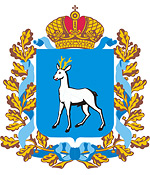
Samara oblast map, Russia
Samara oblast latest news and posts from our blog:.
15 February, 2020 / Syzran - the view from above .
4 April, 2019 / Cities of Russia at Night - the Views from Space .
26 January, 2018 / Samara - the view from above .
4 December, 2017 / Stadiums and Matches of the World Cup 2018 in Russia .
21 November, 2016 / Park of the History of Equipment in Tolyatti .
More posts..
History of Samara Oblast
The territory of the present Samara region became part of the Russian state in the middle of the 16th century, after the Kazan and Astrakhan khanates were conquered by the Russian state. In the 17th-18th centuries, the territory around the middle Volga was colonized by migrants from other regions of Russia and foreigners (in particular, the Volga Germans).
The intensified colonization of the region began only in the second half of the 18th century. From the mid 19th century, this region experienced economic growth. Samara became an important center of the Russian domestic grain market, which led to the development of trade and industry in the city. In 1851, Samara became the center of Samara guberniya (province).
In 1935, Samara was renamed into Kuybyshev (the historical name was returned in 1990). In Soviet times, industrialization had a serious impact on the development of the region. Construction of plants producing explosives, poisonous substances and ammunition began in the town of Chapayevsk.
During the Second World War, the region became one of the centers of the defense industry of the USSR. In 1941, an oil processing plant was put into operation in Syzran providing the army with fuel. Several aviation plants were evacuated to Kuybyshev from Moscow and Voronezh. They started production of “Il-2” attack aircraft.
More Historical Facts…
In 1942, a railway passed through Syzran to supply Soviet troops during the Stalingrad Battle. In 1941-1943, diplomatic missions of foreign countries to the USSR were located in Kuybyshev (Samara). In 1941, there were plans for transferring the capital of the country to Kuybyshev in case the German troops capture Moscow.
In the 1950s-1960s, this region was one of the leading centers of oil extracting in the USSR. In 1945-1951, Kuybyshev and Novokuybyshev oil processing plants were built. At the same time, construction of Zhiguli hydroelectric power station was resumed. It was put into operation in 1955. Because of this construction, the town of Stavropol was flooded and was rebuilt in a new place and received a new name - Tolyatti.
Later, the construction base created during the construction of Zhiguli hydroelectric power station was used to create a series of other large industrial enterprises in Tolyatti - “KuybyshevAzot” mineral fertilizer plant, “Tolyattikauchuk” synthetic rubber plant (1964-1966), the Volga Automobile Plant (1970), and the largest in the country and the world manufacturer of ammonia “TolyattiAzot” (1979).
At the same time, aviation production was expanded. Kuibyshev Aviation Plant began production of the most mass Soviet passenger medium-haul aircraft Tu-154. The Soviet rocket space program orders were also fulfilled at this plant (“Progress” rockets).
In the post Soviet period, due to saved economic potential, Samara oblast has become one of the main economic centers of the country.
Samara Oblast views
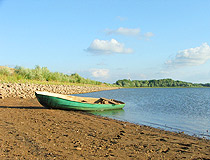
Samara Oblast scenery
Author: Dmitriy Siryachenko
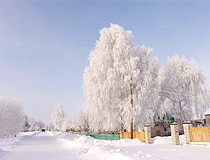
Winter in Samara Oblast
Author: Ochin Vladimir

Author: Alexander Urgalkin
Samara Oblast - Features
Samara Oblast stretches from north to south for 335 km, and from west to east - for 315 km. The climate is moderately continental. The average temperature in July is plus 20.7 degrees Celsius, in January - minus 13.8 degrees Celsius.
The largest cities and towns of the region are Samara (1,137,000), Tolyatti (685,600), Syzran (163,000), Novokuybyshevsk (98,400), Chapaevsk (70,100), Zhigulevsk (50,000), Otradny (47,000).
The main resources of the Samara region are oil, natural gas, shale oil, various building materials, water resources. The local industry is presented by about 400 large and medium plants and over 4,000 small ones. The most developed industries are machine building (automotive industry) and metalworking, fuel, electric power, chemical and petrochemical, non-ferrous metallurgy.
AvtoVAZ is the largest manufacturer of cars in Russia and Eastern Europe. TogliattiAzot is the largest producer of ammonia in the world (about 8-10%). The 300-kilometer section of the main ammonia pipeline Togliatti-Odessa passes through the territory of the region.
Crop production specializes in the cultivation of wheat, barley, millet, buckwheat, sunflower, vegetables, and potatoes. Livestock is represented by production of cattle meat and milk, pigs, poultry.
Tourism in Samara Oblast
There are 19 monuments of archeology, more than 1,200 cultural monuments, 11 theaters, and 58 museums on the territory of the Samara region. The cities of Samara, Syzran and Tolyatti are included in the List of Historical Settlements of the Russian Federation.
The most developed areas of tourism: sightseeing tourism, cruises along the Volga River, medical and recreational, ecological, event, rural, and ethnographic tourism, caving tourism, bicycle and horse routes.
The most interesting sights:
- The buildings of the Samara Drama Theater and the Samara Opera and Ballet Theater,
- Stalin’s Bunker, House with Elephants, Klodt Mansion, Zhigulevsky Brewery in Samara,
- Samara Space Museum,
- Church of Sergius of Radonezh in Chapaevsk,
- Kremlin, Sterlyadkin Mansion in Syzran,
- Church of the Kazan Icon of the Mother of God in the village of Verhnee Sancheeleevo,
- Museum of the History of Technology in Tolyatti,
- House-museum of Ilya Repin in the village of Shiryaevo,
- Sarbai Center of Folk Crafts in the village of Sarbai,
- Center for Historical Modeling “Ancient World” with the dwellings of the Stone and Bronze Ages,
- Zhiguli State Nature Reserve and Samarskaya Luka National Park - a UNESCO World Heritage Site. The Zhiguli Mountains are the largest mountain range in the region and, at the same time, one of the most beautiful places in Russia.
Annual festivals taking place in the Samara region:
- All-Russia festival of the author’s song named after Valery Grushin (the first weekend of July),
- “World of Bards” (in the end of August),
- Festival of electronic music and extreme sports GES FEST (the second week of July),
- “The Battle of Timur and Tokhtamysh”,
- “Steppe races in the Samara estate of Leo Tolstoy”,
- International festival “Drums of the World” (June),
- Holiday “Syzran tomato” (mid-August),
- “Holiday of a cherry pie” in the village of Shiryaevo,
- International festival “Theatrical Circle” in Tolyatti,
- Festival of Classical Ballet named after Alla Shelest.
Samara oblast of Russia photos
Nature of samara oblast.
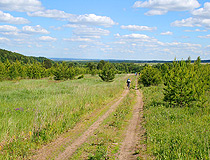
Field road in the Samara region
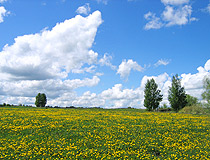
Dandelions in Samara Oblast
Author: Vladimir Baboshin

Samara Oblast landscape
Pictures of the Samara region

Soviet past in the Samara region
Author: Dyomin Ivan

Church in Samara Oblast
Author: B.Yartsev
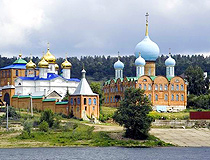
Churches in the Samara region
Author: Sergey Bulanov
- Currently 3.03/5
Rating: 3.0 /5 (262 votes cast)

COMMENTS
To put it simply, social impacts of tourism are; "The effects on host communities of direct and indirect relations with tourists, and of interaction with the tourism industry" This is also often referred to as socio-cultural impacts. Tourism is, at its core, an interactive service. This means that host-guest interaction is inevitable.
A look at the socio-cultural aspect of sustainability in tourism and its essential role in the growth of intelligent, purposeful tourism. ... Some communities are very fragile in the face of mass tourism, it impacts their quality of life on a daily bases, both on tangible and intangible levels. Mass tourism may allow locals to buy mobile phones ...
The Sociocultural Impact on Residents of Three Villages. As the economy grows rapidly, the social culture of the three villages around the tower cluster is also undergoing a transformation. The main sociocultural impact of tourism on inhabitants of the three villages in Kaiping is shown in Figure 6. Figure 6.
UN Tourism invited UNESCO to contribute to this second set of guidelines relating to the sociocultural impacts of COVID-19. The publication draws on the insights of the two UN agencies to analyse the impact of the pandemic and suggests solutions for cultural tourism to prosper again, under the principles of shared responsibilities and greater ...
Global tourism leads to a beneficial economic impact on the host country and it also increases the socio-cultural exchange between the host and tourist countries.
The socio-cultural impacts of tourism are manifested in the populatio ns as a result of. direct or indirect coexistence with tourists, and their studies began long after those on.
In a review of earlier research, Australian researchers listed the potential positive and negative impacts from a social perspective. In the table below is a selection of the most prominent: It's important to take into account potential social and cultural impacts when planning for tourism. Often the focus is on tourism as a tool for socio ...
The searches were performed using the terms "Sociology of tourism", "Socio-cultural impacts", "Host community" as keywords in the scientific area of tourism. The review of the literature undertaken provides an analysis of the evolution of published research and also permits the identification of future research pathways.
of negative sociocultural impacts of tourism (T olkach & Pratt, 2019). In addition, tourism is dependent on and has a signi cant impact on the natural environment in which it operates. e natural ...
1.1. Anthropology of tourism. Tourism involves a temporary and voluntary visit to a place away from home; it is a leisure activity (Przeclawski 1993; Smith 1989). During this visit a tourist has to interact with different people, who facilitate in different means in the tourism process (Reisinger, 1994).
Also "LAC are usually set by local communities and draw the lines between what is acceptable and what is unacceptable in terms of socio-cultural tourism impacts in their locality" (De Ascaniis et al. 2018, p. 37). These two indicators or borderlines, as may be called, are important to consider while constructing a sustainable socio-cultural ...
Socio-cultural sensitivities such as xenophobia, racism, and other forms of prejudice impact demand for tourism products and experiences. Existing studies on these phenomena have tended to be framed through singular or binary lenses, and a holistic exploration and conceptualisation to inform tourist behaviour research is absent.
Pilar Smyth. The purpose of this Master's thesis is to uncover the negative physical and social effects of tourism on heritage sites around the world and on various ethnic groups and/or Indigenous Peoples. The specific aims of this thesis are: To discover incidents of vandalism at heritage sites from around the world in the forms of looting and ...
The Social Impacts of Tourism (English version) This background paper has three objectives. First to identify the most common social impacts arising from tourism development. Second, to suggest reasons why negative impacts occur. Third, to suggest policies and strategies for countries to adopt in the 21ist century to mitigate these negative ...
Tourism in destination areas has socio-cultural impacts on host communities. The impacts can either improve the quality of life or degrade it. The purpose of the present study is to examine the relationship between socio-cultural impacts of tourism and community people's quality of life in Maun, Botswana.
Cultural Impact of Tourism. The lifestyle changes at the places of tourist importance are quite encouraging. At the same time, planners have to mitigate the consequences of demonstration effect. ... The socio - cultural dimensions of tourism can be nurtured and productively nourished by the proper and systematic integration of policy and ...
Abstract. Residents' overall well-being and quality-of-life require a deeper understanding of their perceived social impacts of tourism to determine appropriate management strategies to promote behaviours in support of tourism development. Aligning with the 2030 Agenda for sustainable development, this paper proposes a new framework for ...
Purpose: This literature review paper aims to comprehensively analyze and synthesize existing research on the. socio-economic impacts of tourism on local communities. It seeks to identify and ...
Tourism is one of the world's fastest growing industries and an important source of foreign exchange and employment, while being closely linked to the social, economic, and environmental well-being of many countries, especially developing countries. Maritime or ocean-related tourism, as well as coastal tourism, are for example vital sectors of the economy in small island developing States ...
Sociocultural impacts refer to the ways in which tourism changes community and individual values, behaviour, community structure, lifestyle and overall quality of life; in relation to both the destination and the visitor (Hall, 2007; Murphy, 1985, as cited in Brunt & Courtney, 1999). Table 7 shows the positive and negative sociocultural impacts ...
Tolyatti, the Russian city. The Russian homage to Palmiro Togliatti was not chosen at random. In fact, a significant city was named after him: Stavropol on Volga became Tolyatti (Togliatti Russianized) because right there — on the banks of Volga river — the Italian politician had a key role in building the popular AvtoVAZ factory, the manufacturer of the Lada car brand.
The debate on the positive and negative social and cultural impacts of tourism has been a. common reemerging i ssue that surround t ourism development and sustainability. Tourism. development is ...
Samara Oblast - Overview. Samara Oblast is a federal subject of Russia located in the southeastern part of European Russia, in the middle reaches of the Volga River, part of the Volga Federal District. Samara is the capital city of the region. The population of Samara Oblast is about 3,132,000 (2022), the area - 53,565 sq. km.